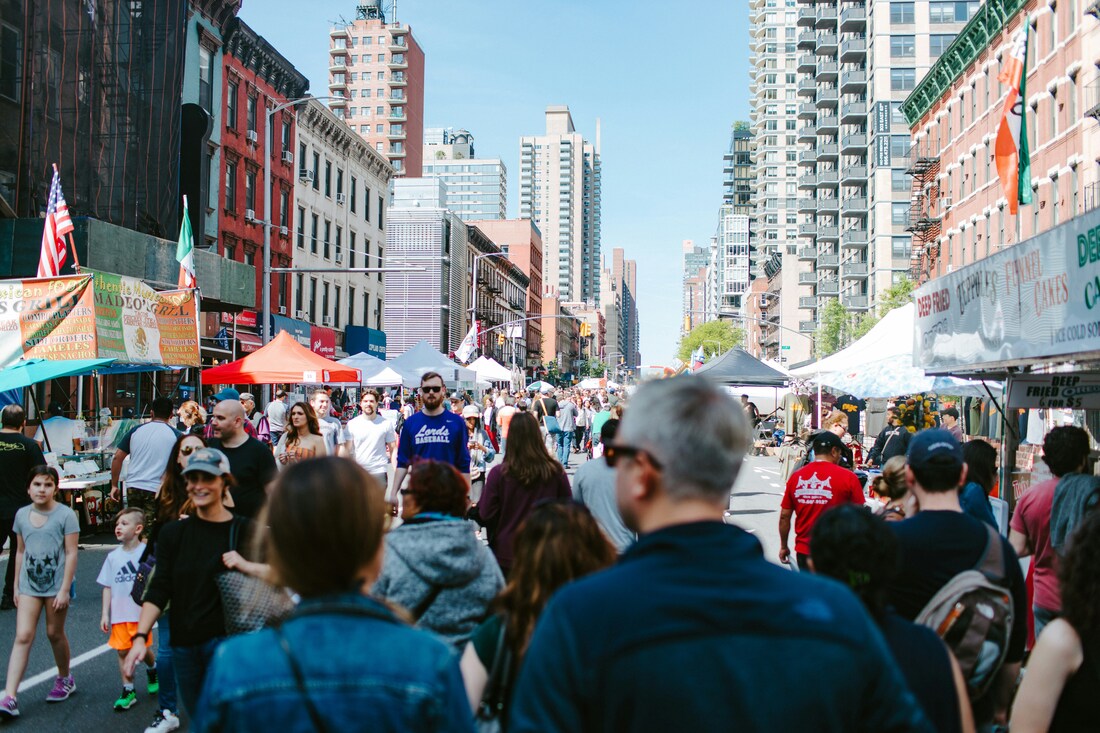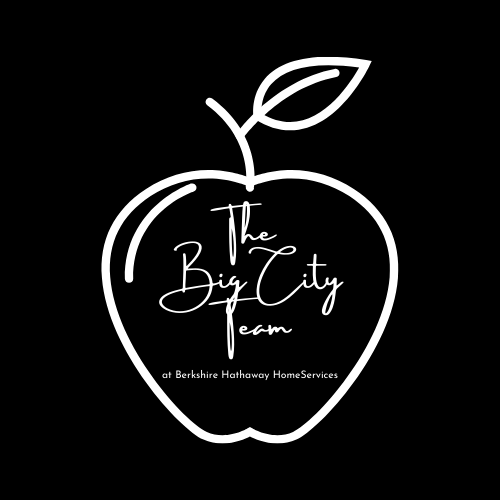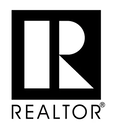 Photo by Denys Nevozhai on Unsplash Buying a home in New York City is a fast-paced and competitive process. If a property is priced well, it sells quickly. To ensure you’re ready to make a strong offer when you find the right condo or co-op, you need to be prepared from the start. Here’s a guide on how to make an offer in NYC and the essential documents you’ll need. Be Prepared from the Start Many buyers start their home search casually, only to fall in love with a property and then scramble to gather the necessary documents to make an offer. To avoid this, it's important to have everything ready from the beginning. Understanding the asking price and market value will help you make a fair and competitive offer. Key Documents and Steps for Making an Offer in NYC 1. REBNY Financial Statement The REBNY Financial Statement is crucial for any offer in NYC. This document outlines your assets, liabilities, income, and overall financial picture. Preparing this statement can take some time, so it's best to start early. Home sellers often review this statement as part of their decision-making process. 2. Mortgage Pre-Approval, Pre-Qualification Letter, or Proof of Funds Having a mortgage pre-approval or pre-qualification letter is essential before you start your property search. It shows sellers that you are a serious and capable buyer. If you're planning to pay in cash, a proof of funds document will suffice. This ensures that you won’t be delayed waiting for bank approval while other buyers are making offers. 3. Real Estate Attorney An experienced real estate attorney can make the home buying process much smoother. Most attorneys charge a flat fee, payable only if the deal is completed, so don’t hesitate to ask questions. If you don’t have an attorney, your real estate agent can recommend one. 4. Estimated Closing Costs NYC closing costs can be substantial and often catch buyers off guard. Discuss these costs with your attorney or agent to get an accurate estimate. The NYC mortgage recording tax is a significant portion of these costs, especially for condo purchases. 5. Contract Deposit & Down Payment In NYC, you typically need to put down at least 20% of the purchase price, with an initial contract deposit of 10% when signing the contract. Some buildings and mortgage companies may accept less, but higher down payments are generally seen as stronger offers. 6. Post-Close Liquidity (Co-Ops Only) Co-op boards often require buyers to have at least two years’ worth of maintenance and mortgage payments in post-close liquidity. It’s also wise to estimate your debt-to-income ratio. For co-ops, a ratio under 30% is preferred, with some more stringent boards requiring 25% or lower. Consult Professionals Real Estate Agent A knowledgeable real estate agent can help you determine the value of a home, navigate negotiations, and understand the market dynamics. Their expertise is invaluable in making a competitive offer. Mortgage Lender Working with a mortgage lender early in the process ensures you understand the down payment requirements and have your financing in order. This distinction is crucial to differentiate the down payment from the contract deposit. Conclusion The New York City real estate market is highly competitive. By being well-prepared and educated about the process, you increase your chances of successfully purchasing your dream home. Start gathering your documents and consulting with professionals early to make a strong and compelling offer when the right property comes along. If you have any questions about the NYC home buying process, please contact our team leader Colin O'Leary at 646-300-2012.
0 Comments
🌟 Condo vs. Co-op: Navigating NYC Real Estate 🏙️ New York City's real estate market offers two main housing options: condos and co-ops. 🏢 Each comes with unique advantages and challenges, so understanding their differences is essential. 🔹 Condos: Own your unit outright and share common areas. Easier approval, flexible financing, and higher resale value. Ideal for rental income. 🔹 Co-ops: Buy shares in a corporation, with strict board approval. Generally more affordable but with higher upfront costs and stricter subletting policies. Great for long-term value in desirable areas. Key differences: Approval process Financing options Monthly fees Resale & rental potential 🏠 Which is right for you? It depends on your lifestyle, finances, and goals. For personalized advice, contact Colin O'Leary at 646-300-2012 for a free consultation.  Photo by Courtney Cook on Unsplash Summer in New York City is a time of vibrant energy and endless possibilities. From outdoor adventures to cultural experiences, the city offers a plethora of activities to suit every taste and interest. Whether you're a local resident or a visitor exploring the Big Apple, here are 10 fun things to do in NYC this summer that will make your experience truly memorable.
If you’re a renter hunting in New York City for a new development with all the bells and whistles, the Bronx might not be your first choice. However, Mott Haven's new developments are set to surprise you. Leading NYC in new housing units, Mott Haven has seen significant growth thanks to two rezonings and major investments. Fully amenitized buildings offer a mix of market rate and rent-stabilized apartments, with luxurious amenities like pools, roof decks, and gyms at rents lower than in Manhattan, Brooklyn, and Queens. In 2023, the Bronx accounted for 35% of new housing in NYC, with Mott Haven and Port Morris seeing 2,326 new units. One standout development is Maven at 2413 Third Ave., a 27-story tower with 200 apartments, 60 of which are rent-stabilized. Amenities include parking, a roof terrace, co-working space, gym, media room, game room, and retail space, with rents for one-bedroom apartments starting at $3,085. The Bruckner House at 40 Bruckner Blvd. offers 365 apartments with amenities like a rooftop lounge, pool, outdoor theater, mini golf, and work spaces. Rents start at $2,657 for a studio. Another exciting project is 138 Bruckner (ONE38), featuring 579 apartments with in-unit washers and dryers, soaking tubs, balconies, an interior garden, gym, sauna, steam rooms, and an Olympic-sized pool. Rents range from $3,100 for a studio to $4,600 for a two-bedroom apartment. The Bankside Development has transformed the neighborhood’s waterfront, offering apartments with rents starting at $3,050 and amenities like a basketball court, indoor/outdoor pools, children’s playrooms, and retail spaces. Estela at 414 and 445 Gerard Ave. is an eco-friendly project with LEED Platinum certification, featuring a courtyard, screening room, concierge, workspace, and gyms. Rents range from $1,486 to $4,141. Conveniently located near Yankee Stadium, the Hip Hop Museum, Fordham University, the Bronx Zoo, and the New York Botanical Garden, Mott Haven is the first subway stop on the 6 line and close to major highways. This makes it easy to access both the city and nature. The area offers a vibrant community with local favorites like The Lit. Bar, Maisonetta, Mae Mae Café, and Chocolate Cortés. The Bronx is experiencing a renaissance, and Mott Haven is at the forefront. With rising interest and ongoing development, now is the time to explore and invest in this vibrant neighborhood. Discover the new Mott Haven and see why it’s becoming NYC's new housing hotspot. For more questions or to schedule a tour of the area with our team, contact The Big City Team at 646-300-2012. Photo credits: Brookfield Properties Welcome to the ultimate guide to revolutionizing real estate investment strategy with the 1031 Exchange! Are you a savvy investor looking to grow your property portfolio? Say goodbye to hefty capital gains taxes with the 1031 Exchange. This game-changing approach allows investors to defer taxes on the sale of investment properties by reinvesting the proceeds into similar properties. Why is this significant? It's all about safeguarding and expanding capital. By postponing taxes, investors retain more profits for future investments while exploring new markets and properties without immediate tax worries. Plus, with long-term planning, investors can pass on appreciated properties to future generations with reduced tax liabilities. Imagine selling a property and pocketing a handsome profit. With the 1031 Exchange, reinvest those proceeds to defer taxes indefinitely, maximizing reinvestment potential. Successful investing isn't just about acquisition—it's about astute asset management. With strategies like the 1031 Exchange, investors can turbocharge their financial portfolios and leave behind a lasting legacy. Colin O'Leary, with Berkshire Hathaway HomeServices, is dedicated to helping investors unlock their real estate investment potential. Reach out today at 646-300-2012, and let's turn aspirations into achievements. Stay informed, stay proactive, and keep conquering real estate goals. Finding an apartment in the heart of the Big City can feel like a daunting task, but fear not – Leah Garcia is your trusted guide to finding your perfect home in the city that never sleeps. First things first, let's talk about understanding the costs. New York City's rental market demands upfront payments that can catch newcomers off guard. Prospective tenants need to budget for the first month's rent, a security deposit equal to one month's rent, and a broker's fee, which often amounts to 15% of the total annual rent. These expenses can add up quickly, so it's crucial to be financially prepared. Moving on, let's discuss application strengths. Landlords in NYC typically look closely at credit scores and income levels to assess eligibility. A general rule of thumb is to earn at least 40 times the monthly rent. If income falls short, having a guarantor may be necessary for the lease. Understanding these criteria beforehand will streamline the application process and increase the chances of securing the desired apartment. Now, let's consider location. New York City's diverse neighborhoods offer something for everyone, but it's essential to choose wisely. Factor in commute times and transportation options when selecting a neighborhood. While living in the heart of the city may seem appealing, it's crucial to balance convenience with affordability to find the perfect fit for one's lifestyle and budget. Feeling a bit overwhelmed? Don't worry – expert assistance is available. Navigating NYC's rental market can be complex, but enlisting the help of a seasoned rental agent can help simplify the process. These professionals have insider knowledge, access to premium listings, and negotiation skills that can work to the advantage of both first-time renters and seasoned New Yorkers. In conclusion, renting an apartment in New York City requires careful planning and foresight, but armed with the right information and assistance, it can be a rewarding experience. If you're ready to embark on your apartment hunt or have questions about the process, don't hesitate to reach out to Leah Garcia for a complimentary consultation. You can contact Leah Garcia at 929-571-5742 or via email at [email protected]. Your new home awaits in the city that never sleeps! ------------------------------------------------------ 📲 Let’s Connect! Follow The Big City Team on social media: Instagram ➡️ https://www.instagram.com/thebigcityteam/ LinkedIn ➡️ https://www.linkedin.com/company/thebigcityteam/ Facebook ➡️ https://www.facebook.com/TheBigCityTeam X (Twitter) ➡️ https://twitter.com/TheBigCityTeam Step into the electrifying world of New York City real estate with Colin O'Leary, the founder and team leader of The Big City Team at Berkshire Hathaway HomeServices. Whether you're contemplating a venture into the industry or ready to dive in headfirst, Colin is here to provide invaluable insights to ignite your journey in New York City's dynamic real estate market. For any questions or further guidance on getting started in the NYC real estate business, don't hesitate to reach out to Colin at 646-300-2012. Let's make your real estate dreams in the Big Apple a reality! 🏙️🔑 ------------------------------------------------------ 📲 Let’s Connect! Follow The Big City Team on social media: Instagram ➡️ https://www.instagram.com/thebigcityteam/ LinkedIn ➡️ https://www.linkedin.com/company/thebigcityteam/ Facebook ➡️ https://www.facebook.com/TheBigCityTeam X (Twitter) ➡️ https://twitter.com/TheBigCityTeam  Photo by Rafael Leão on Unsplash In the bustling New York City real estate market, two popular housing options stand out: condos and co-ops. It's crucial to grasp the difference between them before diving into the home buying process. Though they may appear similar from the outside, their ownership structures are entirely different, each with its own advantages and drawbacks. Condos involve owning the individual unit outright, with responsibility for maintenance, while also sharing ownership of common areas. Co-ops, on the other hand, require buying shares in a corporation that owns the entire building, granting the right to occupy a specific unit. The approval process varies significantly between the two. Condos typically have a straightforward process, with the condo board having limited power to reject potential buyers, usually restricted to the right of first refusal. In contrast, co-op boards wield substantial control and may reject applicants for various reasons. This process can be rigorous and may involve extensive paperwork and interviews. Financially, condos offer more flexibility in terms of financing options. While co-ops are typically more affordable in terms of the sales price, they come with higher upfront costs. Most NYC co-ops require at least a 20% down payment, whereas condos can sometimes be financed with 10% or less. Both condos and co-ops charge monthly maintenance fees for building upkeep and amenities. However, condo owners pay a monthly "common charge," while co-op owners pay a monthly "maintenance fee." The key difference is that condo owners pay property tax bills separately, while property taxes are included in a co-op's monthly maintenance fee. In terms of resale and investment potential, condos generally have higher resale value and more attractive rental policies. Condo owners have the freedom to rent out their units, making them appealing for generating rental income. On the other hand, co-ops may offer stability and long-term value appreciation, particularly in highly desirable neighborhoods. However, co-ops may have stricter subletting policies, limiting rental opportunities. Choosing between a condo and a co-op depends on factors such as lifestyle, financial situation, and long-term goals. Whether you prioritize ownership autonomy and flexibility (condos) or a sense of community and stability (co-ops), understanding the differences is crucial. For personalized advice and assistance in navigating these options, interested buyers can contact our team at 646-300-2012 to schedule a free consultation. ------------------------------------------------------ 📲 Let’s Connect! Follow The Big City Team on social media: Instagram ➡️ https://www.instagram.com/thebigcityteam/ LinkedIn ➡️ https://www.linkedin.com/company/thebigcityteam/ Facebook ➡️ https://www.facebook.com/TheBigCityTeam X (Twitter) ➡️ https://twitter.com/TheBigCityTeam Exploring New York City's Summer Street Fairs: A Guide to the Best Events Across the Boroughs4/26/2024  Photo by Taylor Heery on Unsplash New York City in the summer is a vibrant playground of culture, food, and fun, and street fairs are one of the highlights. These events, spread across the city's five boroughs, offer a plethora of experiences, from delicious food to unique shopping and lively entertainment. In this guide, we'll take you through the best upcoming street fairs in each borough, so you can make the most of your NYC summer. Street Fairs in Manhattan: April:
May:
June:
Multiple Dates:
Street Fairs in Brooklyn: May:
Multiple Dates:
Street Fairs in Queens: April:
Multiple Dates:
Street Fairs in The Bronx: May:
Multiple Dates:
Street Fairs on Staten Island: August:
With this comprehensive list, you're fully prepared to make the most of your summer in New York City. Whether you're in Manhattan, Brooklyn, Queens, The Bronx, or Staten Island, there's a street fair waiting for you with delicious food, unique finds, and vibrant community spirit. And if you're looking to make a move or find the perfect place to call home in the Big Apple, remember that The Big City Team is here to assist with all your real estate needs. So, mark your calendars, gather your friends, and dive into the rich tapestry of culture that NYC has to offer this summer! ------------------------------------------------------ 📲 Let’s Connect! Follow The Big City Team on social media: Instagram ➡️ https://www.instagram.com/thebigcityteam/ LinkedIn ➡️ https://www.linkedin.com/company/thebigcityteam/ Facebook ➡️ https://www.facebook.com/TheBigCityTeam X (Twitter) ➡️ https://twitter.com/TheBigCityTeam  Photo by Ahmer Kalam on Unsplash As the chill of winter fades away, New York City awakens to the vibrant colors and energy of spring. From strolling through blooming parks to exploring cultural festivals, there's an abundance of delightful activities to enjoy. If you're looking to make the most of the season, here are seven fun things to do in the springtime in the city that never sleeps: 1. Central Park Picnic Central Park comes alive with the arrival of spring, offering a picturesque backdrop for a leisurely picnic. Grab a blanket, pack some delicious snacks, and head to Sheep Meadow or the Great Lawn. Bask in the sunshine, surrounded by blooming flowers and the soothing sounds of nature. It's the perfect way to relax and soak up the beauty of the season. 2. Cherry Blossom Viewing in Central Park While the Brooklyn Botanic Garden boasts a stunning display of cherry blossoms, you can also enjoy these delicate flowers right in the heart of Manhattan. Take a stroll through Central Park and discover cherry trees in full bloom, along with a myriad of other colorful flowers bursting to life. Head to the Conservatory Garden or the Reservoir for particularly beautiful floral displays. Central Park transforms into a floral paradise in the spring, offering a serene escape from the hustle and bustle of the city. Don't miss the chance to immerse yourself in the natural beauty of one of New York's most iconic landmarks. 3. Rooftop Dining As the weather warms up, rooftop bars and restaurants across the city open their doors, offering stunning views of the skyline. Sip on cocktails or enjoy a delicious meal while soaking in panoramic vistas of iconic landmarks like the Empire State Building and the Statue of Liberty. It's the ultimate way to elevate your dining experience and celebrate the arrival of spring in style. 4. Brooklyn Botanic Garden Immerse yourself in the wonders of nature at the Brooklyn Botanic Garden, which bursts to life with colorful blooms and fragrant blossoms in the spring. Explore themed gardens like the Japanese Hill-and-Pond Garden and the Shakespeare Garden, each offering a unique sensory experience. Be sure to check the garden's calendar for special events and guided tours. 5. Outdoor Markets Browse eclectic outdoor markets scattered throughout the city, where local artisans showcase their handcrafted goods. From jewelry and clothing to artwork and gourmet treats, you'll find a treasure trove of unique finds. Check out popular markets like Smorgasburg in Brooklyn or the Union Square Greenmarket for a taste of local flavor and culture. 6. Bike Ride Along the Hudson River Rent a bike and embark on a scenic ride along the Hudson River Greenway, a picturesque path that stretches along Manhattan's west side. Marvel at stunning views of the river, the Statue of Liberty, and the skyline as you pedal through parks and waterfront promenades. It's a refreshing way to explore the city and stay active during the spring months. 7. Cultural Festivals Celebrate the diverse cultures of New York City at springtime festivals and events held throughout the five boroughs. From the Tribeca Film Festival to the Sakura Matsuri Cherry Blossom Festival, there's something for everyone to enjoy. Immerse yourself in music, art, food, and traditions from around the world, all while soaking up the festive atmosphere of the season. Spring is a magical time in New York City, filled with endless opportunities for adventure and discovery. Whether you're a longtime resident or a first-time visitor, these seven activities are sure to make your springtime in the Big Apple unforgettable. So, dust off your sunglasses, grab your camera, and get ready to embrace all that spring has to offer in the greatest city in the world! ------------------------------------------------------ 📲 Let’s Connect! Follow The Big City Team on social media: Instagram ➡️ https://www.instagram.com/thebigcityteam/ LinkedIn ➡️ https://www.linkedin.com/company/thebigcityteam/ Facebook ➡️ https://www.facebook.com/TheBigCityTeam X (Twitter) ➡️ https://twitter.com/TheBigCityTeam |
BLOG Archives
June 2024
|
|
The Big City Team
Berkshire Hathaway HomeServices Fillmore Team HQ: 4717 Avenue N Brooklyn, NY 11234 Colin R. O'Leary Founder & Team Leader Licensed R.E. Salesperson Phone: 646-300-2012 [email protected] |
|
Your Trusted Partners in Real Estate Across the NYC Metro Area
© 2024 BHH Affiliates, LLC. An independently owned and operated franchisee of BHH Affiliates, LLC.
Berkshire Hathaway HomeServices and the Berkshire Hathaway HomeServices symbol are registered service marks of Columbia Insurance Company, a Berkshire Hathaway affiliate.
Equal Housing Opportunity.
Privacy Policy






